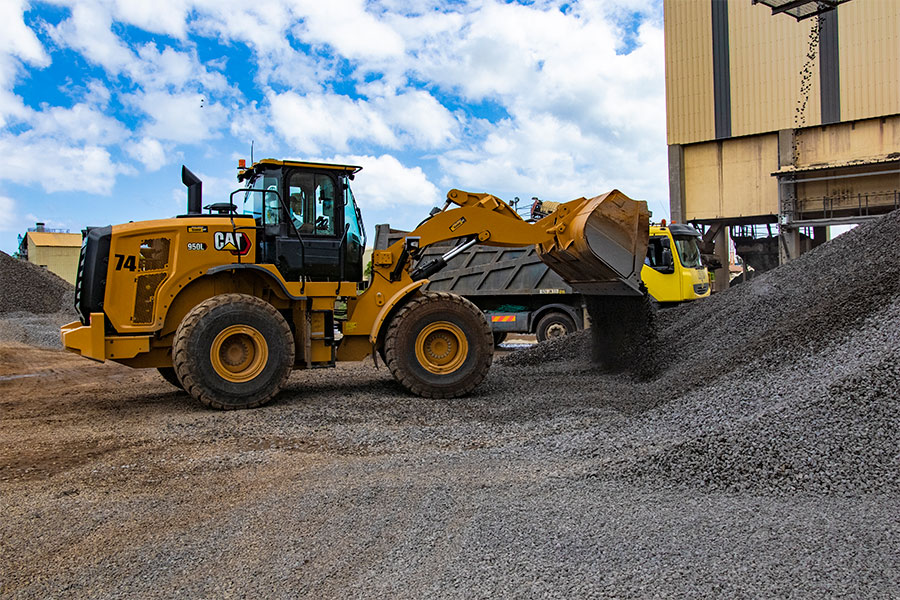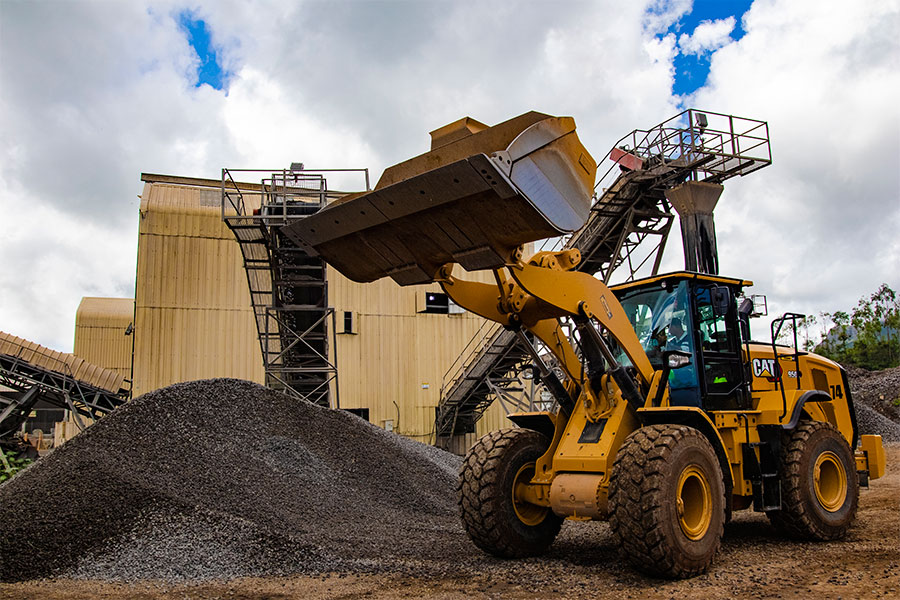Investing in new equipment enables fleet owners to be more agile and responsive as business needs change. Yet procurement of capital equipment represents a major capital cost for construction material suppliers and capital equipment owners at large. Given the instability of the economy, influenced by factors outside the industry’s control, businesses need flexible ways of meeting their equipment needs.
With that in mind, UBP recently opted for a flexible, tailored and site-specific rental facility for its wheel loader needs. Didier Raboude, fleet optimisation manager at UBP, tells Quarrying Africa that the deal with Scomat is part of the construction material supplier’s new approach to doing business, in line with the changing dynamics in its market environment.
“The heavy rents concept is for a defined period and speaks directly to our operational needs,” says Raboude. “An interesting part of the concept is the frequent renewal of the loaders, as well as the provision of a spare SEM wheel loader (a Caterpillar-owned brand) for the rental duration.”
Unlike traditional equipment rental or plant hire, the heavy rents concept is not charged per hour and does not include the operator. “The heavy rents model offers equipment only (excluding the operator) at a monthly rental fee. The equipment is maintained and repaired by the dealer. The customer is responsible for the operator and fuel,” explains Desigen Naicker, commercial manager at Scomat.
Strong heritage
Established in 1953, UBP has been involved and continues to play an important role in most major infrastructure and building projects in Mauritius. Listed on the Stock Exchange of Mauritius since June 1989, the company’s core business activity is the manufacture and sale of construction materials.
UBP is a leader in the building materials market, especially in the building block, aggregates and rocksand segments. The company also manufactures and markets a variety of concrete products, including precast pavements, roof tiles, concrete pipes, slabs and kerbs, among others.
With a staff complement of about 830 employees across seven production sites and two sales depots strategically located on the island, the UBP Group also has manufacturing plants in Rodrigues, Madagascar and Sri Lanka.

Market conditions
Commenting on the state of the market, Pervenche Quenette, sales manager at UBP, says the construction sector has long been a major driver of Mauritius’s economic growth. The industry, he says, has a significant role to play in the economic recovery of the country following the devastating effects of the Covid-19 pandemic. The construction sector employs, directly and indirectly, some 120 000 workers in the country, representing about 22% of the total workforce. In 2021, the industry contributed about 4,4% to the GDP.
However, the Covid-19 pandemic has had a devastating effect on the Mauritian economy, industries, businesses and communities. During the first wave of the pandemic, says Quenette, several public sector construction projects were severely affected.
“The Covid-19 pandemic is probably turning endemic, with long-lasting effects on the economy and our industry as well,” says Quenette. “The severity of the economic damage depends on the course of the pandemic in society as well as our response to it. Therefore, we should learn to live with Covid-19 as it is the new normal,” emphasises Quenette.
However, he adds, Mauritius has adapted quickly to new business models and has thus proven resilient in times of crisis. The construction industry has weathered the storm much better than other markets. With Rs 65-billion (about US$1,5-billion) worth of development projects, the sector is being propelled to new heights and will thus preserve thousands of jobs and drive the much-needed economic growth.
“Projects such as business parks, smart cities, resorts and villas are currently driving demand in the private sector. These are among the critical components in modernising the physical fabric of the country, while strengthening the foundations for economic growth and creating new job opportunities,” says Quenette.

New loader fleet
The four new Cat wheel loaders, delivered in February this year, will play a major role in UBP’s quest to improve its operations and take advantage of the thriving construction market. The machines are used for a range of tasks, including transfer of aggregate and rocksand on sites, as well as loading trucks.
At UBP sites, the wheel loader is also used for another purpose outside its traditional applications – it is deployed in mud points at determined intervals.
“At UBP we care for our people and are customer-centric. The new Cat wheel loaders make material handling and loading jobs safer, more precise, comfortable for the operator, reliable and versatile,” says Raboude.
Why Cat?
UBP and Scomat have a long relationship spanning over 50 years. In its quest to run efficient operations, UBP has always relied on Scomat for its equipment needs. The latest deal is testimony to the strength of the relationship and trust between the two companies, stresses Raboude.
“We are confident that Scomat will continue delivering our desired level of service by being attentive to our needs; providing adequate products, advice, monitoring and control; keeping the required parts in stock; providing cost-effective and timely service; and being proactive,” he says.
According to Desigen Naicker, commercial manager at Scomat, UBP was one of the very first customers on the island to use Cat wheel loaders. “We have over the years established a relationship based on trust and service delivery. As the market demands constant change to adapt to new industry dynamics, Scomat has positioned itself to provide tailored solutions to meet the UBP Group’s needs,” says Naicker.
Cost management
The aggregates/cement sector is quite competitive, with a handful of key players on the Island. Naicker says cost management and control, as well as effective production, are thus key to competitiveness and ultimately profitability. The Cat 950L, he says, is the perfect fit for this sector as the wheel loader is designed to improve productivity and reduce owning and operating costs.
One of the key talking points on the Cat 950L is its fuel economy. The loader is up to 10% more fuel-efficient than the previous series, while increasing engine power by 22%. Additional benefits include extended service intervals; performance series buckets as standard, allowing operators to move more in a cycle compared with using conventional buckets; integrated technologies that allow customers to monitor their assets’ health, productivity and location remotely, as well as plan for preventative services ahead of schedule.
The new Cat 950L comes with proven technologies to meet customers’ high expectations for reliability, productivity, fuel efficiency and long service life. The range is more powerful and fuel-efficient than its predecessor models, featuring significant drivetrain and hydraulic-system refinement.
“The Cat 950L is designed for greater fuel efficiency and lower fuel consumption while maintaining high performance. The new model is not only more powerful, but also features up to 10% less fuel consumption compared with H Series predecessors,” concludes Naicker.
The article first appeared in the March-April edition of Quarrying Africa.





